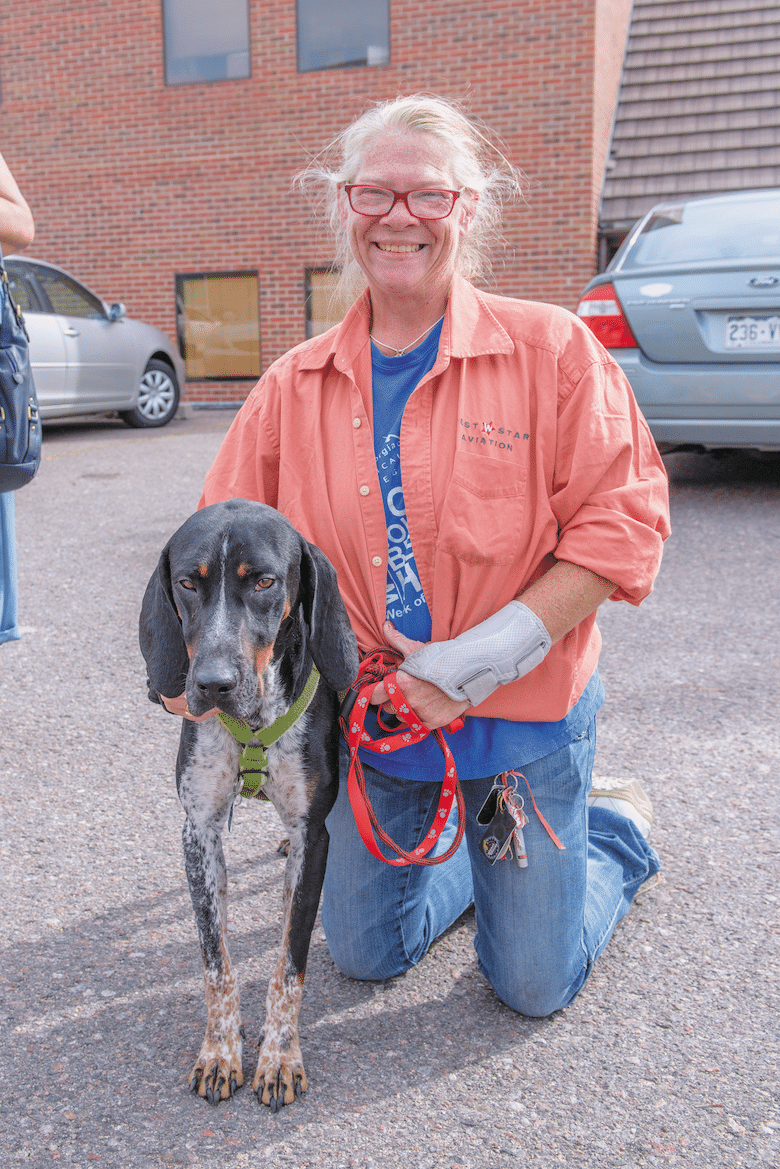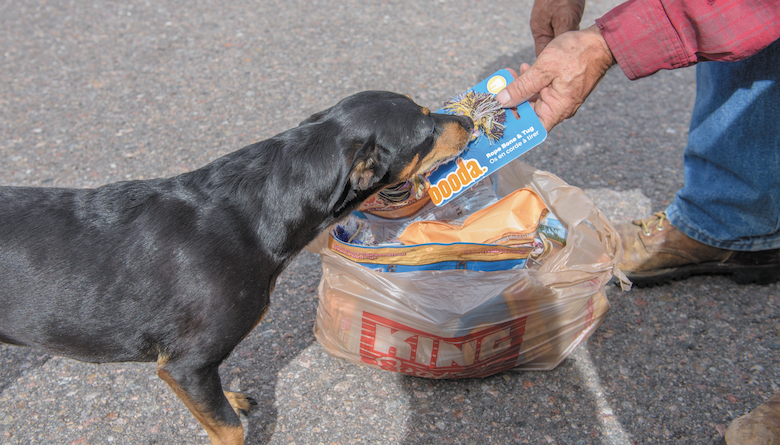Helping Feed Pets in Need
Have you ever opened a new bag of dog food, and your pup turns up her nose? It’s happened many times at my house — in fact, I’m convinced that my Chiweenie is the pickiest eater on the planet.
If she only knew how lucky she is. After speaking to Eileen Lambert, executive director of Colorado Pet Pantry, a food bank for animals, I learned that many dogs don’t get the luxury of being picky eaters. They are lucky if they get a meal at all.
“I have clients tell me they have to make a choice between paying rent and their utilities and buying pet food,” says Eileen, who started the Denver-based nonprofit in 2013 when, as a shelter volunteer, she noticed dogs were consistently given up because their owners couldn’t afford to take care of them.
Now, Eileen and her team have grown Colorado Pet Pantry into the largest pet food bank in the country, she says, with 45 locations throughout Colorado, plus 90 donation bins at local businesses. By collecting donations, such as that opened bag of dog food that your dog refuses to eat, in 2019, the organization fed 3.7 million meals to pets.

Colorado Pet Pantry is the largest pet food bank in the country and fed 3.7 million meals to pets in 2019. Photo: Steve Hostetler/Colorado Pet Pantry
Benefiting pets, owners and shelters
Pet food isn’t covered under food stamps or other subsidized programs, yet it’s frequently requested at food banks for people. Pet owners end up using food allocated for themselves to feed their animals, says Eileen, who found that by giving out pet food, it frees up money for other pet costs like housing and vet expenses.
This, in turn, keeps these pets — sometimes a homeless person’s sole companion — out of the shelters.
“If we can keep an animal in its loving home, that’s truly the best situation for everyone,” she says, adding that it costs shelters about $500 — between intake, food, boarding, training and vet care — to rehome an animal.
Getting food to the pups who need it
The pet food banks are set up similarly to human food banks with the goal of covering 50 percent of people’s pet food costs, Eileen says of this traditional charity model that encourages people to work out their own expenses for half the year and get back on their feet.
Some of the pet pantry’s larger locations, situated near human food banks, can hold enough food to feed 100 to 200 animals per month.
The organization also partners with housing complexes, shelters, universities, senior centers and other nonprofits to distribute food, typically through a volunteer point person, to have it available for individuals who frequent those locations.
“It’s extremely efficient,” Eileen says.

For more information on the Colorado Pet Food Pantry, see coloradopetpantry.org. Photo: Steve Hostetler/Colorado Pet Pantry
Donations
Much of the food that the pet pantry distributes was on its way to the landfill, discarded by owners of picky pets or companies that changed their packaging label or have damaged goods, for example, if the packaging got wet on a delivery truck while it was raining. Eileen partners with these companies and local pet stores that donate their kibble that’s about to expire and can’t be sold on the shelves.
She also collects other dog supplies, such as collars, leashes and toys.
The animal welfare share program
The supplies are kept in a warehouse, and in 2017 Eileen had the idea of sharing them with local animal welfare organizations, which, ultimately, are all working toward the same cause.
“The animal rescues don’t need to spend hard-owned donations on dog food,” she says, adding that it’s also a place where these organizations can store supplies like crates for transports that they might need occasionally.
“It’s become a library,” she says of the 87 organizations that participate.
The program is still growing as Eileen expands outreach and opens more food banks across the state.
“It gives everyone a way to work together,” she says. “Let’s do this for the animals.”
- Check for a pet pantry in your area. Most cities have one. If not, ask your local shelter if it has a pet-food donation program.
- Consider your local human food bank. “Most human food banks are very grateful if you bring pet food in,” Eileen says.
- The most-needed item is kibble because it’s easy to transport and has a long shelf life.
- Set up a pet food drive. Raise awareness in your community by asking friends and family to donate their expired or discarded pet food, treats and old supplies.
- Always check with your local shelter before dropping off food. Not all shelters are able to collect dog food, and it oftentimes becomes a hassle for them to transport it elsewhere.
Top photograph: Steve Hostetler/Colorado Pet Pantry
Read Next: 5 Ways to Shop Online and Help Dogs at the Same Time




